-
Equipment and Tools
-
Aerial Work Platforms, Scaffolding And Ladders
- See all
- Atrium Lift
- Cranes / Boom Trucks
- Electric Scissorlifts
- Low-Level Access
-
Manlift Articulating
- See all
- Manlift Articulating 120' - 135' Combustion
- Manlift Articulating 30' - 39' Combustion
- Manlift Articulating 30' - 39' Electric
- Manlift Articulating 34' - 39' Towable
- Manlift Articulating 40' - 49' Combustion
- Manlift Articulating 40' - 49' Electric
- Manlift Articulating 50' - 59' Towable
- Manlift Articulating 60' - 69' Combustion
- Manlift Articulating 60' - 69' Electric
- Manlift Articulating 80' - 89' Combustion
- Manlift Straight Boom
- Mast Boom Lift
- One Man Drivable
- One Man Push Arounds
- Power Accessories
- Rt Scissor
- Scaffolding And Ladders
- Straddle Adapter
-
Air Compressors And Air Tools
- See all
- Air Compressor Aftercoolers / Filters / Separators / Dryers
-
Air Compressors
- See all
- Air Compressors 1000cfm - 1300cfm
- Air Compressors 1000cfm - 1300cfm Instrument Quality
- Air Compressors 1500cfm - 1800cfm Instrument Quality
- Air Compressors 300cfm - 400cfm
- Air Compressors 300cfm - 400cfm Instrument Quality
- Air Compressors 5cfm - 85cfm
- Air Compressors 600cfm - 900cfm
- Air Compressors 600cfm - 900cfm Instrument Quality
- Air Compressors 90cfm - 250cfm
- Air Compressors Electric 100cfm - 1000cfm
- Air Compressor Accessories
- Air Impact Wrenches
- Air Nailers & Staplers
- Air Tools - Contractor
- Air Tools - Demolition
- Air Tools - Industrial
- Compaction
-
Concrete And Masonry
- See all
- Battery Powered Saw
- Concrete - Finishing Equipment
- Concrete - Surface Preparation Equipment
-
Concrete / Masonry - Cutting & Drilling Equipment
- See all
- Concrete& Asphalt Floor Saws - Push Type
- Concrete And Masonry Blades
- Concrete Dowel Drills
- Core Drill Bits
- Crack Chasers
- Cutoff Saws Hand Held/ Gas/ Air/ Electric/ Hydraulic
- Diamond Chain Saws
- Diamond Core Drills
- Early Entry Concrete Saws
- Masonry Saws
- Street Saws Self-Propelled
- Tile Saws
- Concrete Water Accessories
- Concrete / Masonry - Mixing & Placing Equipment
-
Cooling, Heating, Drying And Indoor Air Quality
- See all
- Air Management - Accessories
- Air Management - Air Scrubbers
- Air Management - Dehumidifier
- Air Management - Fans & Blowers
- Boilers
- Cooling - Air Conditioning
- Cooling - Air Handlers
- Cooling - Chillers
- Cooling - Cooling Tower
- Cooling - Spot Cooler
- Fans / Blowers / Ventilators
- Heating - Accessories
-
Heating - Direct Fired
- See all
- 201k-300k Btu Kerosene Heater Dir
- 20k-80k Btu Kerosene Heater Dir
- 301k-400k Btu Kerosene Heater Dir
- 301k-400k Btu Lp/Ng Heater Dir
- 40k-70k Btu Kerosene Heater Dir
- 81k-200k Btu Kerosene Heater Dir
- Propane Convection& Radiant Heaters 22k - 200k Bt
- Propane/Natural Gas Direct-Fired Heaters 30k-2.5m
- Heating - Electric
- Heating - Flameless
- Heating - Hydronic / Ground
-
Heating - Indirect Fired
- See all
- 1000k Btu And Up Kerosene Heater
- 1000k Btu And Up Lp/Ng Heater
- 1mil - 5mil Btu Diesel Heater
- 201k-300k Btu Kerosene Heater
- 301k-400k Btu Kerosene Heater
- 301k-400k Btu Lp/Ng Heater
- 401k-500k Btu Kerosene Heater
- 401k-500k Btu Lp/Ng Heater
- 501k-999k Btu Diesel Heater
- 501k-999k Btu Kerosene Heater
- 501k-999k Btu Lp/Ng Heater
- 81k-200k Btu Kerosene Heater
- Heating - Steam / Hot Water
-
Earth Moving
- See all
- Backhoe Loaders
- Dozers & Crawler Loaders
- Excavators
- Hydraulic Breakers & Demolition Attachments
- Mini Excavators
- Motor Graders
- Rental Vehicles
-
Skidsteer Loaders
- See all
- Compact Skidsteer Loader
- Skidsteer Loader 999lb& Under
- Skidsteer Loader 1000-1499lb
- Skidsteer Loader 1100-1500lb Track
- Skidsteer Loader 1500-2000lb
- Skidsteer Loader 1500-2100lb Track
- Skidsteer Loader 2000-2800lb
- Skidsteer Loader 2100-2800lb Track
- Skidsteer Loader 2800-3200lb Track
- Ride On Skidsteer Attachments
- Skidsteer Attachments
- Tractors & Landscape Loaders
- Trenchers
- Wheel Loaders
- Floor Care
-
Forklifts
- See all
- Forklift Accessories
- Forklifts - Industrial
- Forklifts - Straight Mast Rt
- Forklifts - Telehandler
-
Material Handling Equipment
- See all
- Aluminum Dockplates
- Aluminum Loading Ramps
- Appliance Trucks
- Banding Kits
- Cricket Pipe Dolly
- Dry Wall Lift& Carts
- Duct Jacks/ Genie Material Lifts
- Glass Manipulators
- Grasshopper Pipe Dolly
- Hand Trucks
- Hilman Rollers/ Roller Skid Systems
- Hydraulic Rol-A-Lift
- Johnson Bar/ Pry Dollies
- Load Binders
- Pallet Pullers
- Pallet Trucks
- Platform Trucks
- Roust-A-Bout Portable Lift
- Stairclimbing Motorized Hand Trucks
- Warehouse Dolly
-
General Construction Tools
- See all
- Abrasive Blasting Equipment
- Batteries And Chargers
- Battery Powered Air Compressor
-
Battery Powered Tools
- See all
- Angle Grinders - Battery
- Circular Saws - Battery
- Compound Miter Saws - Battery
- Drywall Screwdrivers - Battery
- Hand-Held Band Saw - Battery
- Hand-Held Drills - Battery
- Impact Wrenches - Battery
- Miscellaneous - Battery
- Nailers - Battery
- Orbital Sanders - Battery
- Portable Table Saw - Battery
- Reciprocating Saws - Battery
- Rotary And Demolition Hammers - Battery
- Battery Powered Vacuum
- Chain Hoists & Air Winches
- Conveyors
- Drain & Sewer Cleaning & Inspections
-
Electric Tools
- See all
- Angle Grinders
- Belt Sanders
- Circular Saws
- Compound Miter Saws
- Die Grinders
- Drywall Screwdrivers
- Hand-Held Band Saw
- Hand-Held Drills
- Heat Gun
- Impact Wrenches
- Jigsaws
- Magnetic Drills
- Orbital Sanders
- Planers
- Portable Table Saw
- Reciprocating Saws
- Rotary And Demolition Hammer Accessories
- Rotary And Demolition Hammers
- Routers
- Shears& Nibblers
- Stationary Chop Saw
- Hydraulic / Electric Torque Wrenches / Enerpac
- Hydraulic Cylinders / Enerpac Jacking Systems
- Hydraulic Pumps / Enerpac
- Hydraulic Tools / Enerpac
- Industrial Vehicles
- Jacks - Bottle / Screw / Toe Jack
- Laser & Optical Levels
- Lighting Equipment
-
Mechanical & Electrical Contractor Trade Tools
- See all
- Cable Feeder
- Cable Reel Roller - Electric
- Cable Reel Stands/ Spindles
- Chain Vice/ Tri-Stand/ Pipe Stands
- Crimping Tools - Electric
- Crimping Tools - Manual
- Electric Cable Pullers& Sheaves
- Electric Conduit Benders
- Electric Pvc Heaters/ Pvc Benders
- Geared Threader/ Hog Head
- Hole Cutting Tool
- Hydraulic Conduit Benders
- Hydraulic Punch Drivers/ Knockout Sets
- Manual Pipe Tools& Accessories
- Mechanical Conduit Benders
- Pipe Threaders - Electric
- Power Fish System
- Power Pipe Cutters
- Victaulic Roll Groovers
- Wire Carts/ Dispensers
- Miscellaneous
- Paint Sprayers
- Pressure Washers
- Siding Brake
- Site Services
- Storage Containers / Jobsite Storage
- Traffic Safety Equipment
- Trailers
- Welding & Plasma Cutting Equipment
- Generators And Accessories
- Ground Protection
-
Lawn, Landscape, And Tree
- See all
- Battery Powered Lawn & Landscape
-
Lawn & Landscape
- See all
- Backpack Sprayer
- Bed Edger/ Trencher
- Chain Saws
- Garden Tillers
- Gas-Powered Drill
- Hand Tools
- Hand-Held Metal Detector
- Hedge Trimmers
- Hydroseeder
- Lawn Aerators
- Lawn Dethatchers
- Lawn Mowers& Brush Cutters
- Lawn Overseeder
- Lawn Spreader& Roller
- Lawn Vacuum
- Leaf Blowers/ Mulchers
- Log Splitter
- Post Driver
- Post Hole Augers
- Sod Cutters
- Straw Blowers
- Trimmers& Pruners
- Wheelbarrows
- Stump Grinders
- Wood & Brush Chippers
- Load Banks
- Portable Ice Rinks And Pathways
- Pumps
- Refrigeration
- Temporary Containment Walls
- Temporary Fencing
- Temporary Structures
- Trench And Shoring Equipment
-
Aerial Work Platforms, Scaffolding And Ladders
-
-
Industry Solutions
Agriculture Equipment Amusement Theme Parks Automotive Equipment Aviation Equipment Civil Commercial Construction Equipment Educational Facility Equipment Emergency Restoration and Response Entertainment Venue EquipmentEvent Rentals Film & TV Production Golf Course Management Equipment Government Services Healthcare Hospitality Equipment Industrial Manufacturing Equipment Marine EquipmentMining Equipment Oil Gas Equipment Real Estate and Property Maintenance Retail Maintenance Equipment Stadium Maintenance & Cleaning Equipment Utility Services
-
Industry Solutions
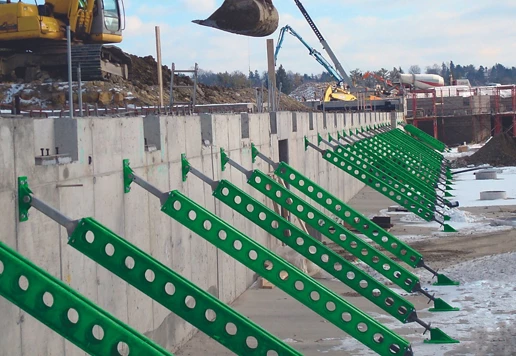
Choosing the Correct Shoring Solution
Excavation work is undoubtedly one of the most hazardous activities in the construction industry. Every year, workers lose their lives due to collapses and cave-ins, making it imperative for employers to prioritize the safety of their workers. The sheer weight of soil is a major concern, with a single cubic yard weighing as much as a car. This weight alone can cause significant injuries or even fatalities if the excavation site isn't correctly supported.
Employers must provide proper excavation safety training to their workers, including identifying potential hazards, using protective gear, and reacting in case of an emergency. This training should be reinforced by supplying adequate protective gear and equipment, like trench boxes, shoring, and sloping, to reduce the risk of cave-ins and collapses. However, every trench project is unique, and the most suitable shoring solution will vary for each project.
Types of Shoring Solutions
Confused about which shoring solution to choose? Click any of the links below to learn more:
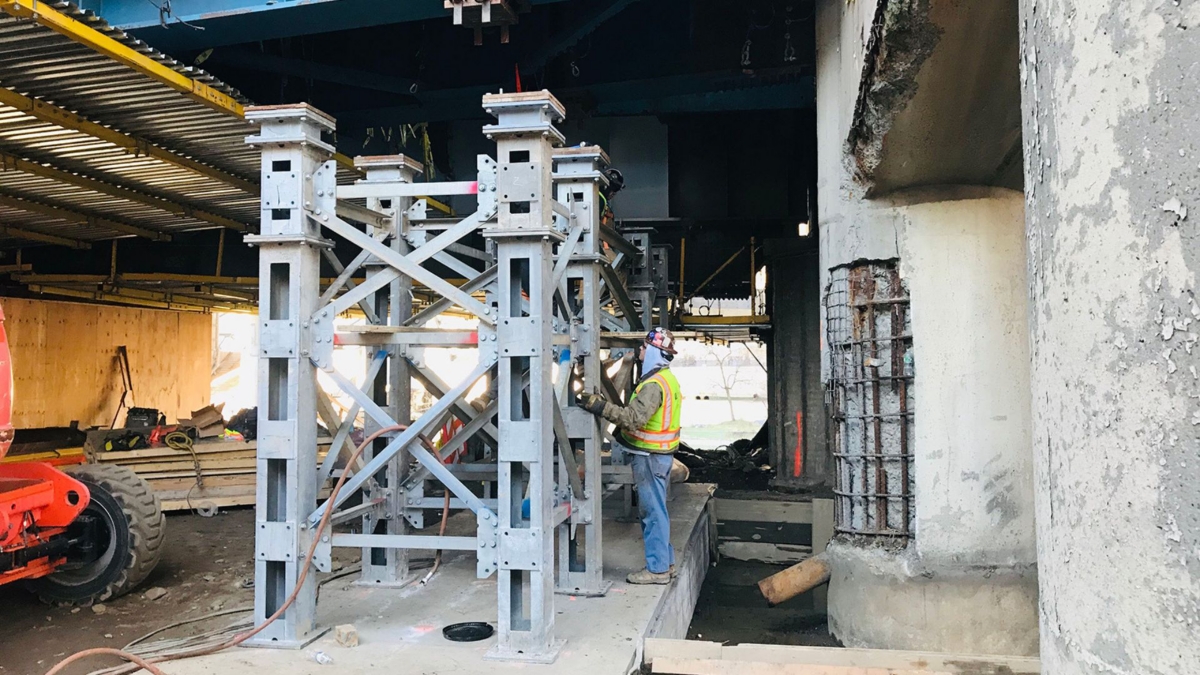
The Purpose of Shoring
Trench shoring serves the crucial purpose of providing temporary support and protection to the walls of a trench or excavation to prevent collapses and ensure the safety of workers. Trenches are often dug for various construction, repair, or maintenance activities, such as installing pipelines, laying foundations, or repairing utilities. The primary objectives of trench shoring include:
- Preventing Cave-Ins: Trenches risk collapsing due to the pressure exerted by the surrounding soil. Trench shoring systems, including supports, shields, or other structural reinforcements, help prevent the walls from caving in and protect workers inside.
- Worker Safety: Trench collapses can be extremely dangerous and potentially fatal for workers. Trench shoring is essential to create a stable and secure working environment, reducing the risk of injuries or fatalities caused by soil movement.
- Compliance with Regulations: Many OSHA (Occupational Health and Safety Administration) regulations and guidelines mandate the use of protective measures, such as trench shoring, to ensure the well-being of workers during excavation activities. Compliance with these regulations is important for avoiding legal and financial consequences.
- Maintaining Excavation Shape: Trench shoring helps maintain the shape and stability of the trench, allowing workers to perform their tasks more efficiently. This is particularly important when precision is required for tasks like laying pipes or constructing foundations.
- Preventing Soil Movement: Besides preventing collapses, trench shoring also helps control soil movement around the trench. This is important for preventing damage to nearby structures, utilities, or infrastructure.
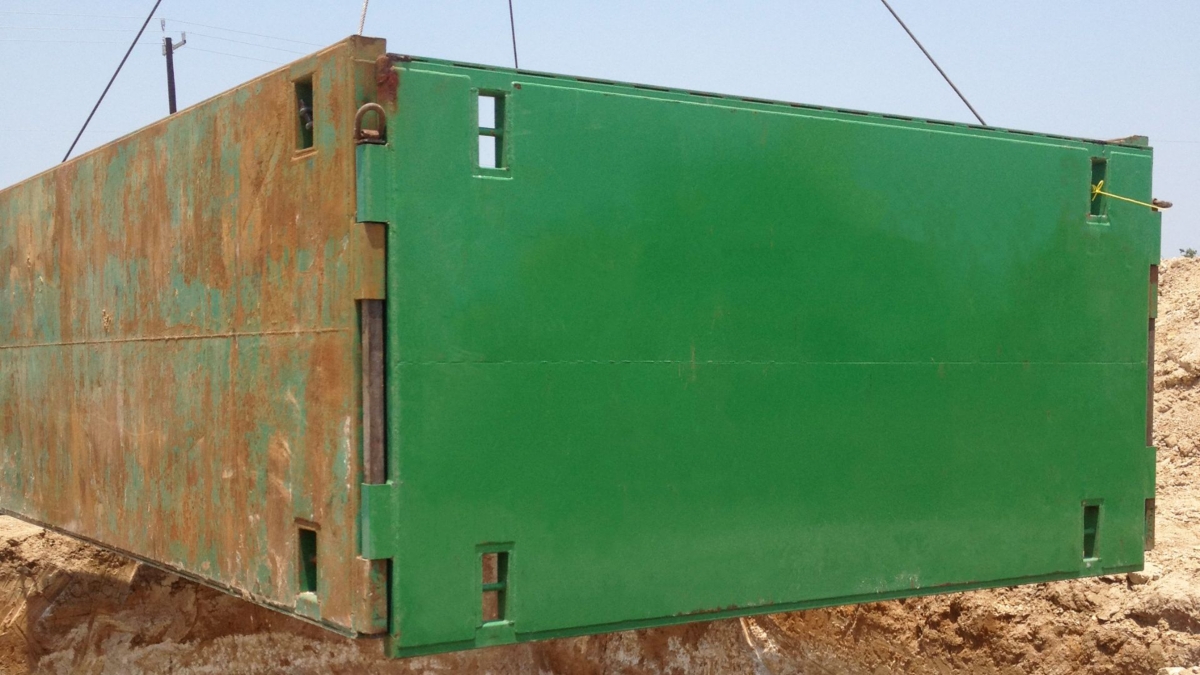
Excavation Shoring
Purpose: Excavation shoring is primarily used to support the sides of a trench or excavation to prevent collapses and protect workers. The primary goal is to ensure the safety of personnel working within the trench.
Application: This technique is commonly employed during activities like pipeline installation, foundation digging, or utility maintenance where a trench is dug into the ground.
Methods: Excavation shoring methods may include the use of trench boxes, hydraulic shoring systems, steel or aluminum trench shields, or other structural supports that are specifically designed to withstand the pressure exerted by the surrounding soil and prevent cave-ins.
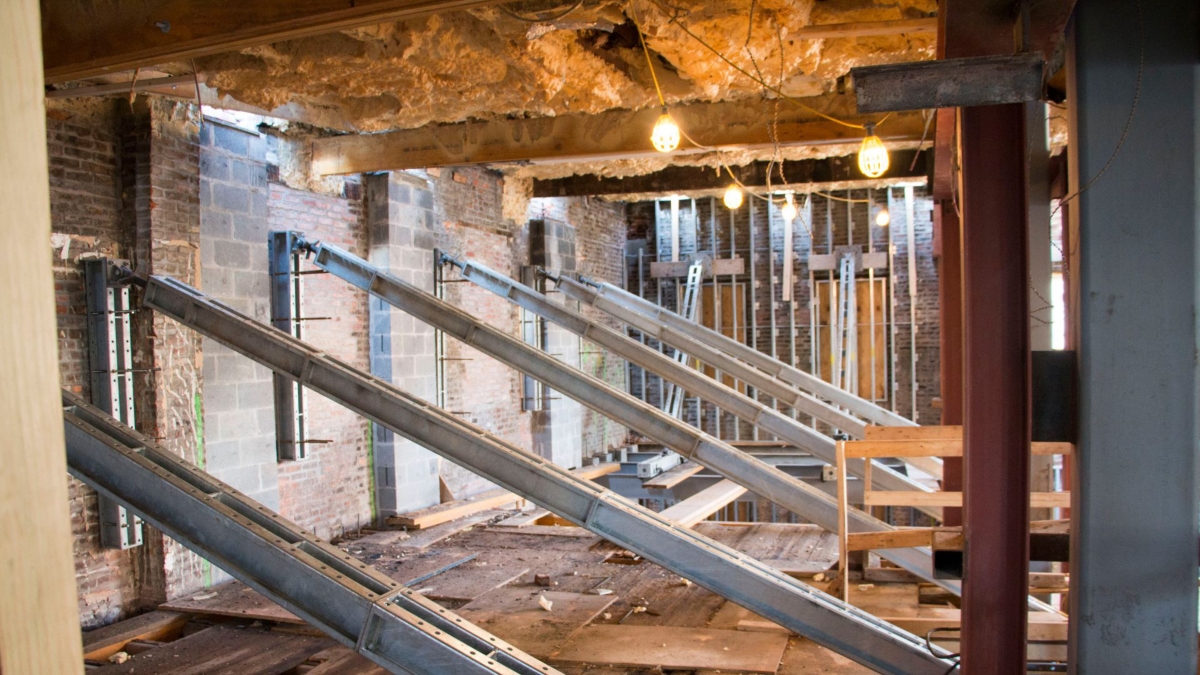
Structural Shoring
Purpose: Structural shoring is employed to provide temporary support to existing structures during construction, renovation, or repair work. It helps prevent structural instability and collapse during modifications or when load-bearing elements are removed.
Application: Structural shoring is commonly used when working on buildings, bridges, or other structures where portions of the existing structure need support during alterations or repairs. It is often employed in situations where the structure's load-bearing capacity is temporarily compromised.
Methods: Structural shoring may involve the use of beams, posts, shores, or other temporary support structures that are strategically placed to bear the loads that would otherwise be supported by the parts of the structure that are being modified or replaced.
Soil Type and Classifications
OSHA provides clear guidelines on soil classifications that dictate the type of protective system required. Understanding soil types, such as cohesive or granular, is essential in determining the appropriate shoring solution.
- Stable Rock: This type of soil has no tendency to break apart or crumble. Excavations in stable rock generally do not require any support systems.
- Type A Soil: This soil type is the most stable and has the highest cohesion. It includes clay, silty clay, sandy clay, and clay loam. Type A soil is the most stable of the three classifications and is considered the safest for trenching. However, protective systems are still required for excavations deeper than 4 feet.
- Type B Soil: This soil includes angular gravel, silt, silt loam, and previously disturbed soils. It is less stable than Type A soil and may require additional safety measures, such as sloping, shoring, or shielding, for excavations deeper than 5 feet.
- Type C Soil: This soil type is the least stable and includes materials such as gravel, loamy sand, and submerged soil. Type C soil requires significant safety measures, such as sloping, shoring, or shielding, for excavations deeper than 5 feet.
How to Test for the Right Soil Type and Conditions
There are six critical questions that must always be addressed and answered before initiating any construction project that involves excavation work:
- Is the soil cohesive or non-cohesive?
- What is the water table's location?
- Will the soil remain stable long enough to install the shoring?
- What are the minimum clear access dimensions required inside the excavation?
- What are the potential consequences of deflection and ground movement?
- Is there a stable bottom to the excavation area?
Answering these questions will enable the estimator to arrive at a practical and cost-effective solution for the project. Sunbelt Rentals can assist to ensure your shoring solution aligns with OSHA standards.
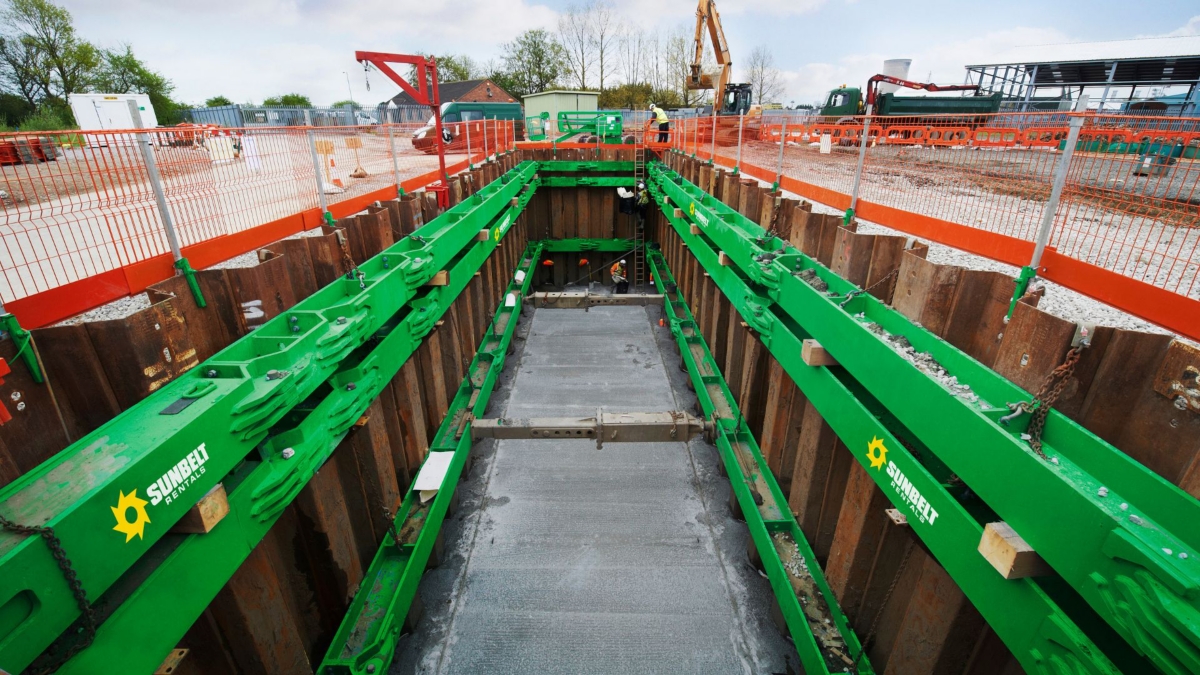
Trench Walls (Sheet Piling)
Trench walls involve the use of interlocking steel, vinyl, or wood sheets, driven vertically into the ground to create a continuous barrier along the excavation perimeter. These walls prevent soil from collapsing into the trench and provide lateral support. Trench walls are effective in cohesive soils but may require additional measures like bracing or walers in granular soils.
Soldier Piles and Lagging
Soldier piles are vertical members, typically steel H-beams, spaced at regular intervals along the excavation perimeter. Wooden or steel lagging is placed horizontally between the soldier piles to retain the soil. Soldier pile and lagging systems are suitable for a wide range of soil conditions and are particularly effective in granular soils. Lagging is preferred in deep excavations and when large areas need to be protected.
Steel Beams (Horizontal Struts)
Steel beams, or horizontal struts, are installed horizontally between vertical supports, such as soldier piles or other shoring systems. They provide lateral support to the excavation walls and help distribute the load. Steel beams are often used in combination with soldier piles and lagging to enhance the overall stability of the excavation.
Hydraulic Shores
Hydraulic shores are a type of shoring system that uses hydraulic cylinders to provide support to trench walls. The hydraulic cylinders are typically attached to vertical members, such as steel or aluminum pipes, which are placed against the trench walls. They are then extended to press against the trench walls, providing lateral support and preventing soil collapse. These systems are versatile and can be easily adjusted to accommodate different trench dimensions. Common types of hydraulic shores include:
- Aluminum Hydraulic Shores: Lightweight and easy to handle, these shores are often used in smaller excavations.
- Steel Hydraulic Shores: Durable and suitable for a wide range of soil types and trench depths.
- Modular Hydraulic Shores: These systems consist of standardized, interchangeable components that can be assembled in various configurations to suit different trench geometries.
Trench Shields (or Trench Boxes)
Trench shields, also known as trench boxes, are prefabricated steel structures placed inside a trench to protect workers from cave-ins. They are typically large, box-like structures made of steel plates and are installed parallel to the excavation walls. Trench shields create a protective barrier, preventing soil from collapsing into the trench and providing a safe working environment. Some trench shields have adjustable components to accommodate different trench sizes. Common types of trench shields include:
- Aluminum Trench Boxes: Lightweight and corrosion-resistant, suitable for smaller excavations.
- Steel Trench Boxes: Tough and durable, used for larger excavations and in more challenging soil conditions.
- Slide Rail Systems: A type of trench support system that includes vertical rails and panels, allowing for a more flexible and adjustable configuration.
Choose the Correct Shoring Solution with Sunbelt Rentals
From small point repairs to large engineered systems, Sunbelt Rentals Trench Safety team is committed to ensuring the success and safety of your excavation project. Our state-of-the-art protective systems, site-specific engineered solutions, and industry-leading service are here to assist you from project inception to completion.
Are you planning your next Trench and Excavation project?
Contact the Trench Safety rental experts at Sunbelt Rentals for all your Trench Safety training and equipment needs.
Trench Safety Resources
Dive deeper into Trench Safety with these related articles, blogs, and success stories.






